Encyclopedia of Embroidery from Central Asia, the Iranian Plateau, and the Indian Subcontinent by Dr Gillian Vogelsang-Eastwood and Willem Vogelsang is the second volume in a series of Encyclopedias of Embroidery from around the globe published by Bloomsbury.
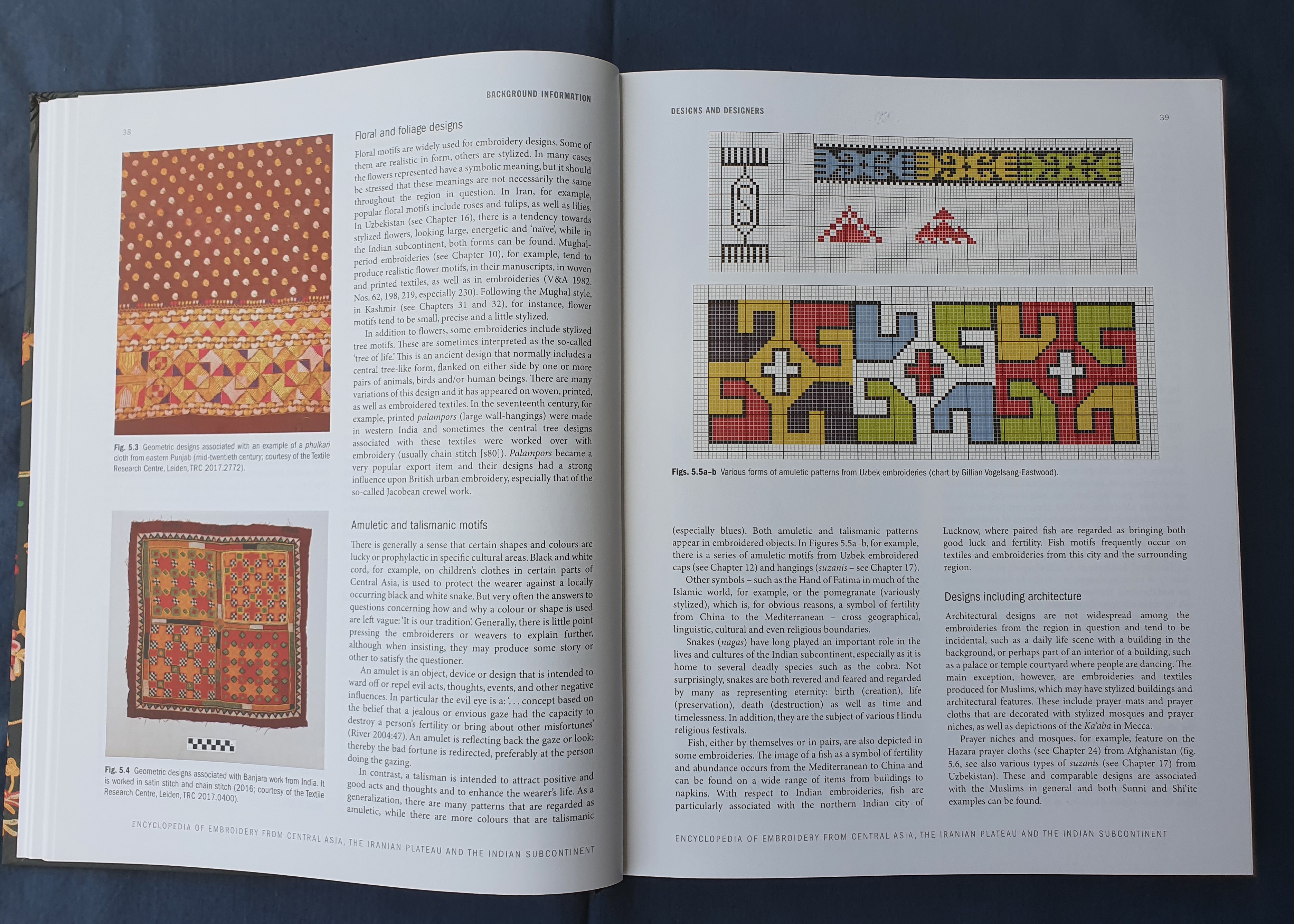
Imprint
Authors: Gillian Vogelsang-Eastwood & Willem Vogelsang
Photographer: Various
Publisher: Bloomsbury
Format & layout
215 x 277 x 29 mm (8.48" x 10.9" x 1.14”)
Hardcover
488 pages
ISBN 978-1350017245
Text and images on a white background
English
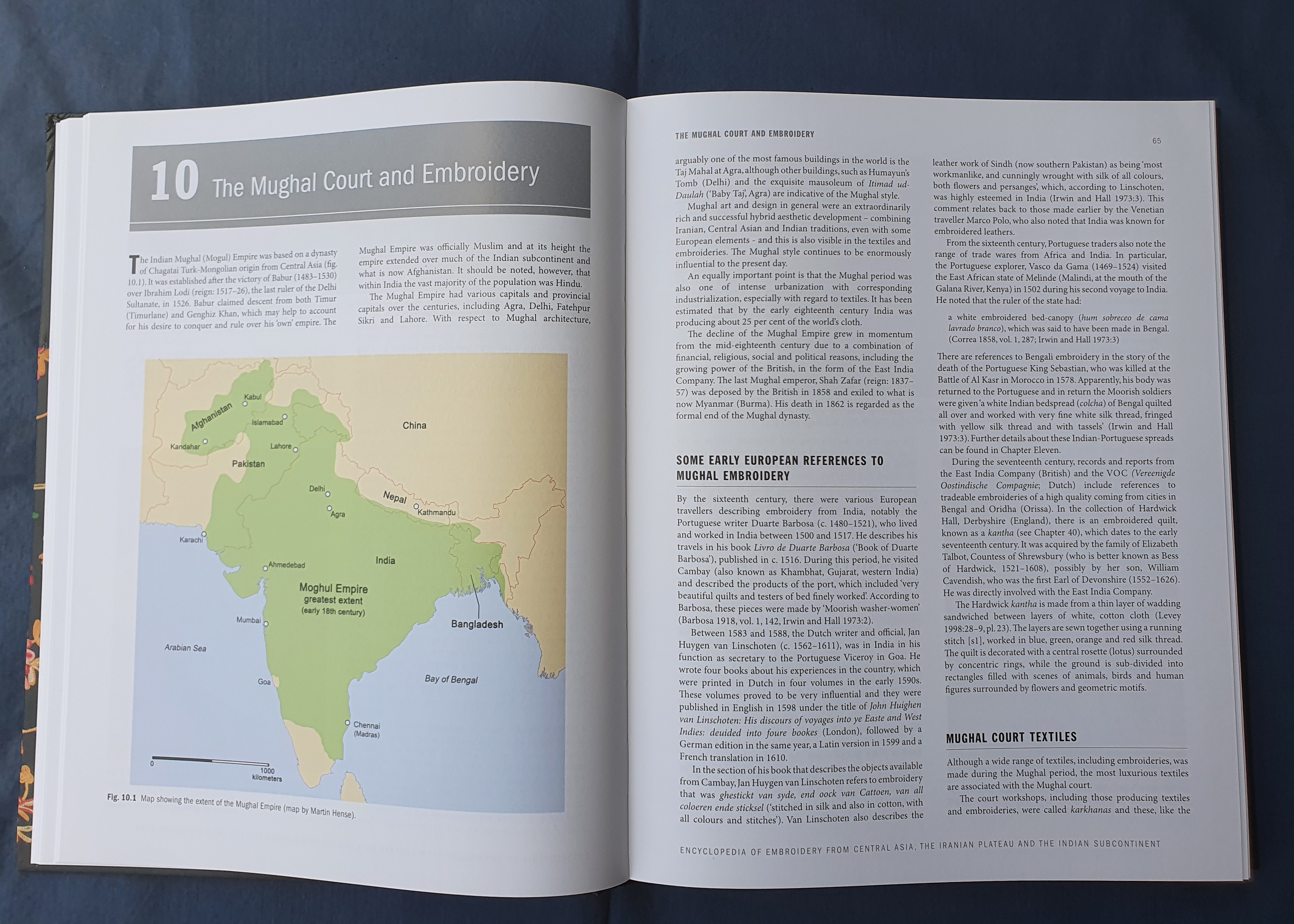
Photos, Illustrations & Diagrams
As with any good encyclopaedia, this Encyclopedia of Embroidery contains multiple photos, illustrations, maps and diagrams. Images are mostly in colour, but a few historical photos are in black and white. Most images are informational and technical showing textiles and garments either in full or partial details.
The textiles discussed here are all related to place and culture, making maps an essential tool for ‘putting them in their place’ and anchoring the text. This book contains several maps.
The author included many diagrams, stitch layouts and sketches to explain and analyse the embroideries from different regions. They are simple, clear, easy to read and a great addition to the book.
Many of the illustrations in this volume are of objects from the
Textile Research Centre, Leiden, The Netherlands where the author, Dr Gillian Vogelsang-Eastwood is the director. Other images were provided by institutions such as the British Museum (London), the Cooper-Hewitt Museum (New York), The Textile Museum (Washington DC), the Archive of International Textiles (Leeds), and the National Museum of Australia (Canberra).
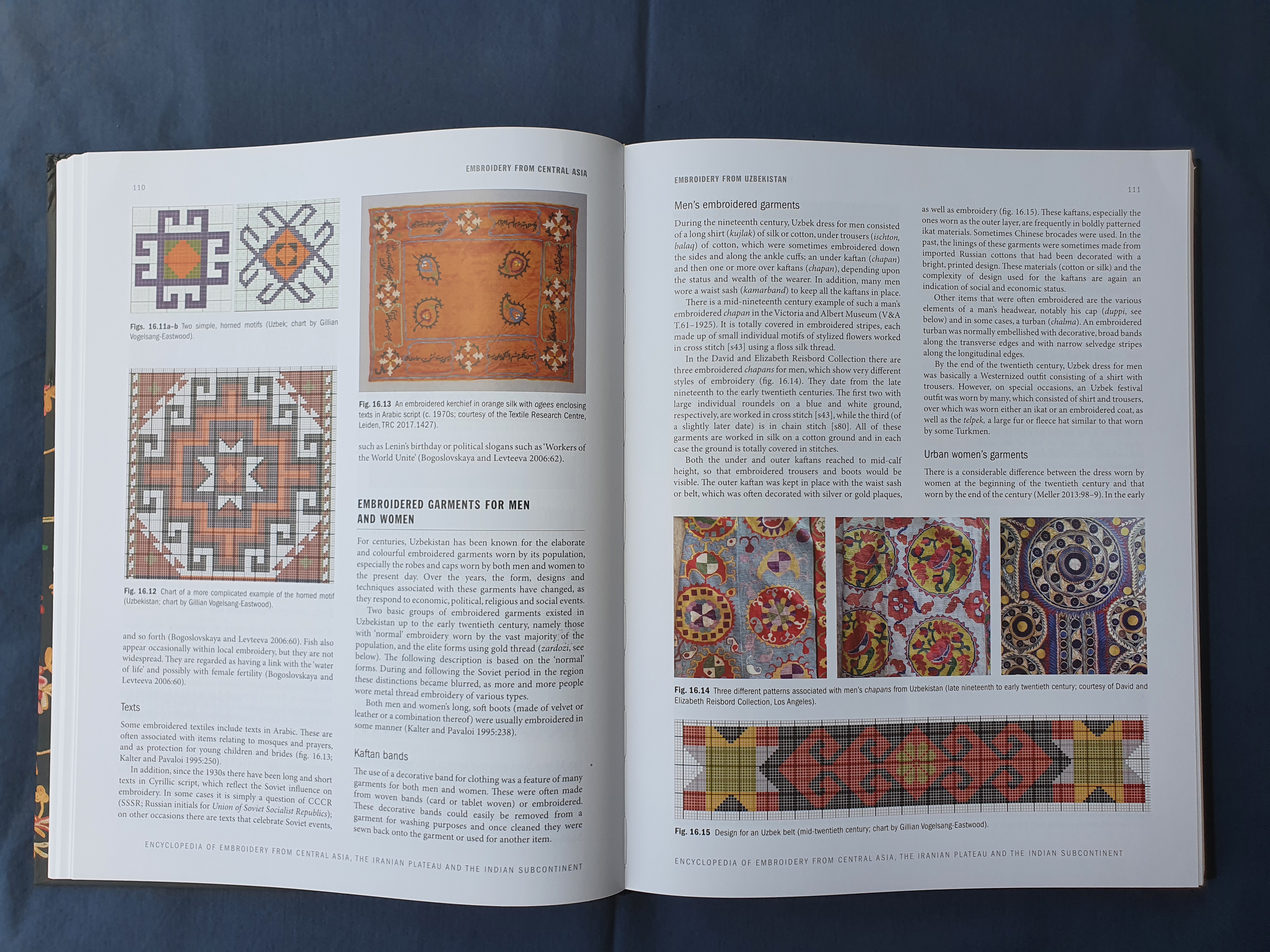
Introduction
This Encyclopedia of Embroidery is the second volume in a series that has the ambitious plan to eventually cover the extensive world of embroidery, rather than looking at one specific form, technique or group of embroideries.
The first volume in the series -
Encyclopedia of Embroidery from the Arab world (2016) – was awarded the prestigious Dartmouth Medal (2017) awarded annually by the American Library Association to a reference work of outstanding quality and significance. This award has influenced academic attitudes towards the subject of embroidery and further encouraged the publisher to continue with this series.
Although the bulk of the content was produced and written by author and textile archaeologist, Gillian Vogelsang-Eastwood, she was assisted and supported by a range of contributors who are all specialists in their fields and powerhouses of knowledge and expertise in their respective culture’s textiles.

Content
The Encyclopedia of Embroidery is divided into six sections.
Background information. Setting the scene, this section gives a brief introduction to materials discussed in the book - fibres, threads, ground fabrics; the tools and equipment used; as well as embroidery techniques and the designs and designers.
Historical Embroideries: This short section looks at textile discoveries and artefacts from ancient civilisations in this region.
The next three sections, making up the bulk of the book, look at each region in more detail. These three neighbouring geographical regions share a long history of commercial, cultural, ethnic, religious, and political connections. The authors originally considered publishing their research on the Indian subcontinent as a freestanding volume as it covers such a wide range of embroidery styles and types. Yet, as this region shares many direct and indirect links with their neighbours it was not possible to make a clear distinction and the three regions are therefore considered together in this one volume.
The last section contains appendices (including comprehensive stitch diagrams), bibliographies, glossaries, and an index.
Each chapter is richly illustrated with photos, diagrams, illustrations and maps. The text is written in easy to read language and divided into short chapters with subheadings. The text is laid out on the page in two columns. At the end of each chapter, there is a list of suggested follow up reading. The author makes it clear that the book is not meant to be read linearly. It is meant to be browsed. The reader is encouraged to jump around between chapters, following different threads of interest, whether it is an era, a culture, stitch types, or historical timelines.
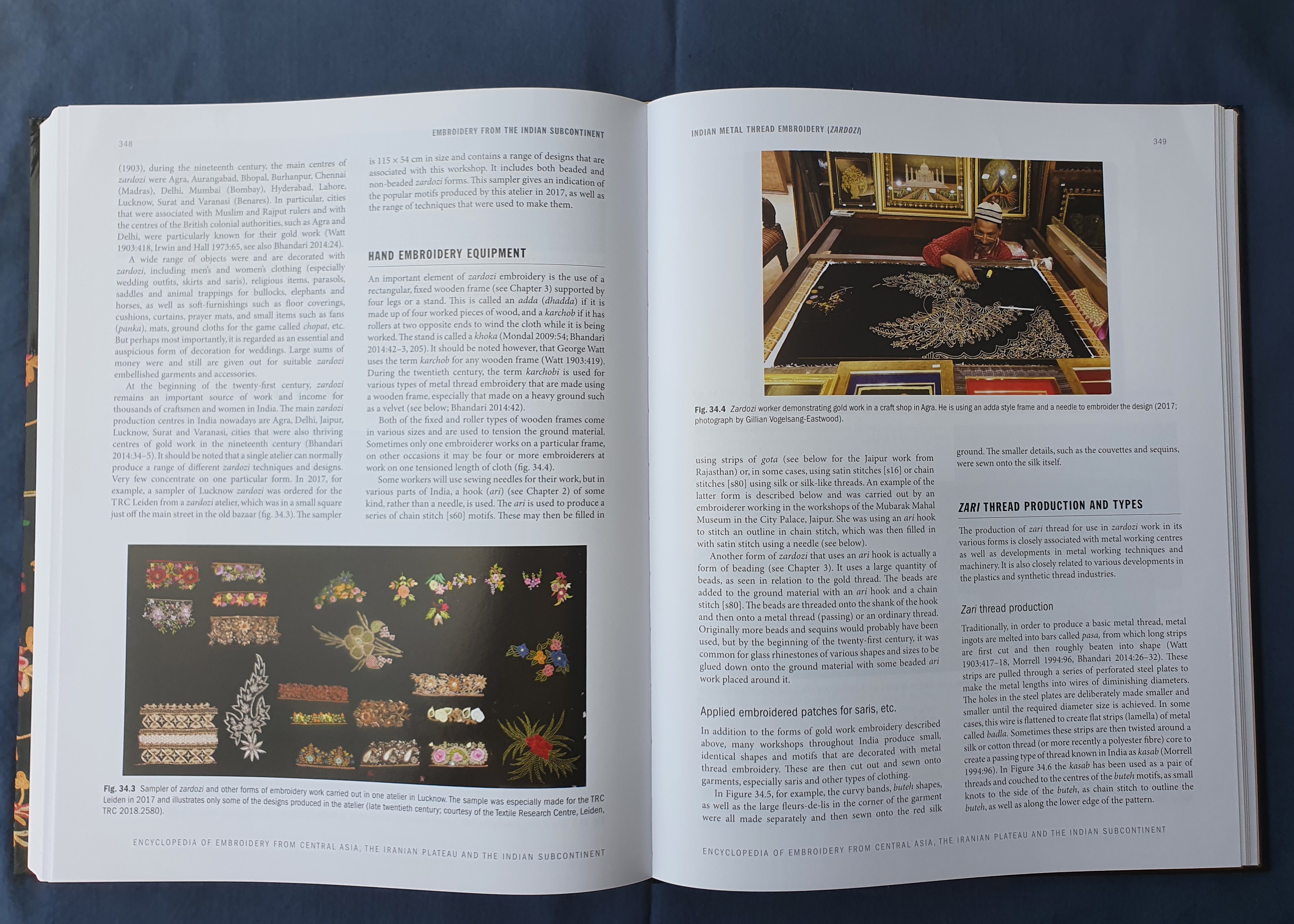
Conclusion
Just like the first volume, this Encyclopedia of Embroidery is a very accessible book. It is well laid out, easy to navigate, and easy to read. It is filled with facts, but these facts are presented in a personal and understandable way. The author’s obvious interest and delight in the subject matter, her genuine interest in, not only embroidery but in sharing her knowledge and love of the subject with the reader is palpable. It has a lightness about it – like a thread.
The book is colourful and visually pleasing and has more images, diagrams, and illustrations than the first volume. It is a vibrant and colourful book, conjuring images of the regions discussed within the pages.
Although understandably, the study of the embroideries from the Indian subcontinent can fill a sizable freestanding volume, we are grateful that the authors and publishers decided not to do it. By grouping these three regions together, we get a more complete picture of the cross-cultural influences and the rich diversity of each area. This gives each region more weight, more value, and more recognition.
This is not lightweight reading. But neither is it only a textbook nor a highbrow academic work. This book is relatable, practical, easy to read and packed with information. As with the first volume - this is not just a book, it is a legacy.
We at The
Zay
Zay: (Arabic: costume, Pl. azyaā’), a set of clothes in a style typical of a particular country or historical period. Initiative are honoured to have Dr Gillian Vogelsang-Eastwood as a dear friend and as one of our esteemed
Creative Advisors. As preservers of dress and textile heritage, we understand and recognise that no culture or heritage stands alone. Just as with these three regions we are all influenced and enhanced by our interaction and shared relationships.
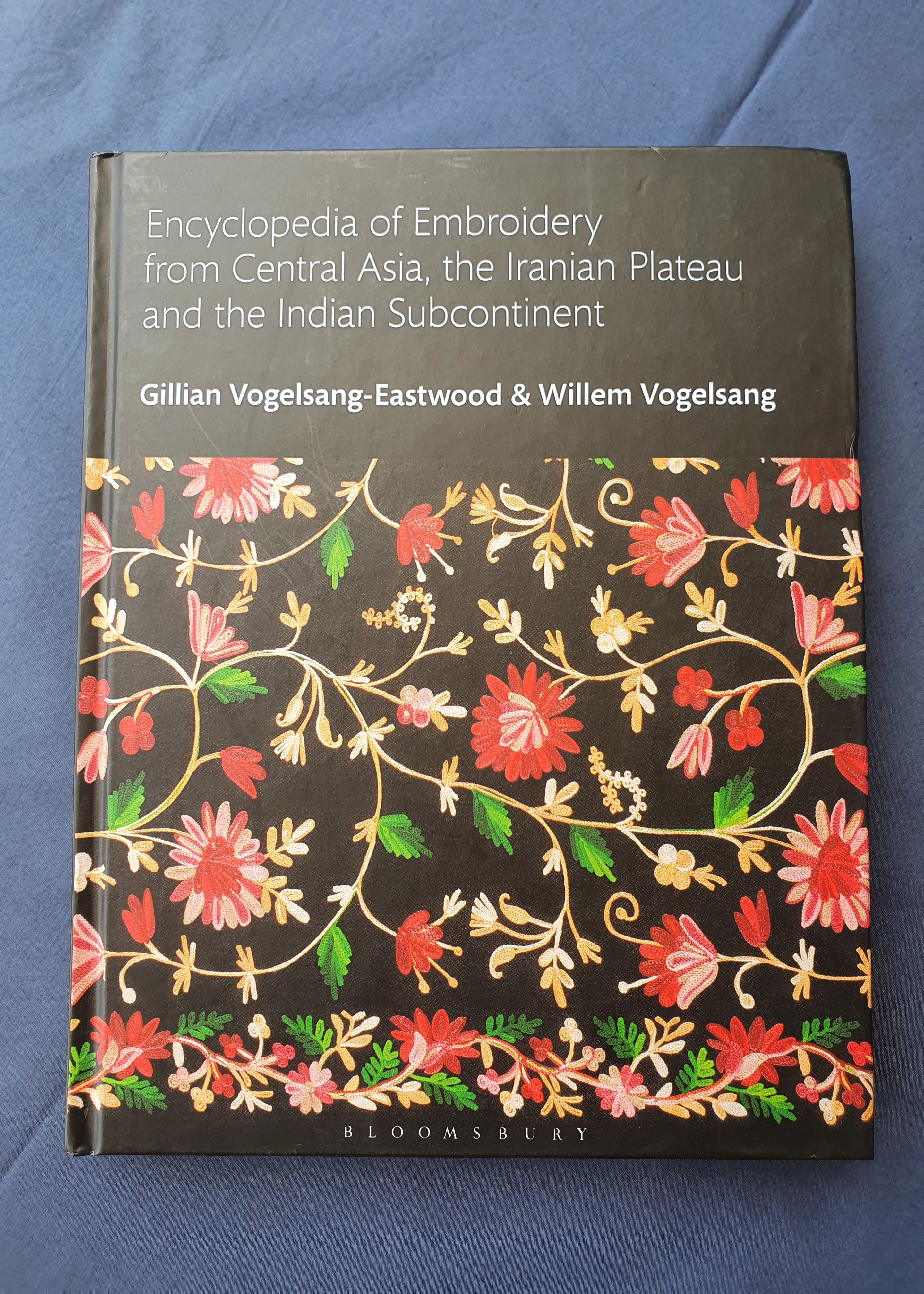 Get your copy here
Get your copy here.










 Get your copy here.
Get your copy here.